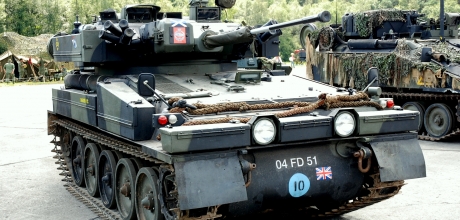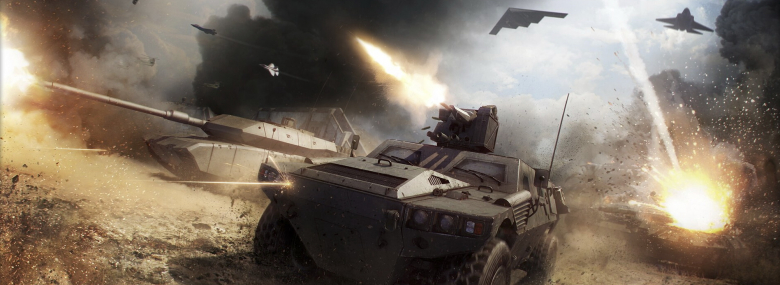
The T-90A Main Battle Tank is an upgraded variant of the original T-90, which itself is a heavily overhauled T-72.
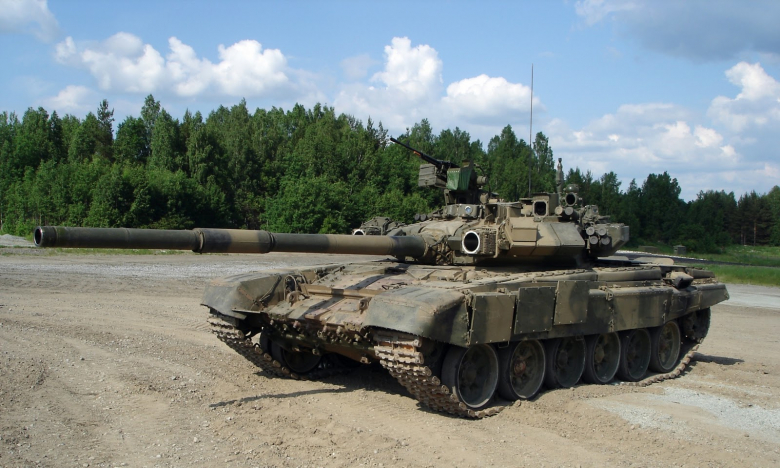
T-90A
Development of the T-90A started under the designation of Object 188A1 in the very late 1990s and early 2000s with the first vehicles produced in 2004.
The goal, as usual, was to bring the older vehicle up to date to keep up with modern armor trends, while keeping the upgrade within Russian military budget constrictions. In this sense, the T-90A is a reactive measure, unlike the T-80U for example.
The main visual difference between the T-90 and the T-90A MBT is the presence of a new, welded turret, offering – in combination with the excellent Kontakt-5 ERA kit – increased protection against all types of ammunition. Frontal resistance against HEAT rounds is estimated at 1000mm+ RHAe, although the actual composition is a secret and these numbers, as usual, need to be taken with a grain of salt. The vehicle is also equipped with a Shtora-1M soft-kill APS and Tucha smoke grenade launchers.

T-90A
It has a 125mm 2A46M-5 smoothbore gun paired with an improved automatic loading mechanism and a 9K119M Refleks-M system, allowing it to fire 9M119M Invar or 9M119M1 Invar-M1 guided missiles, which can destroy all but the most well-armored western vehicles at a distance of up to 5000 meters. The T-90A fire is controlled by 1A42 FCS, consisting of:
- 1G46 laser rangefinder
- T01-K04 commander sights
- 1V528-1 ballistic computer
The 2004 variant is equipped with Buran-M thermal sights, while the 2006 variant received an updated second generation ESSA system with French Catherine FC thermal imager by Thales, increasing the vehicle's maximum view range at night from 1800 to 4000 meters. The gun is also equipped with a new stabilizer system, allegedly doubling the vehicle's accuracy on the move compared to the old model.
Soviet and Russian MBT upper frontal plate composition by Artem Gavrilov
The original 840hp V-84MS diesel engine was replaced with an advanced turbocharged version of the same engine, the V-92S2 38.88 liter V12 turbodiesel producing 1000hp and increasing its maximum speed from 60 to 65 km/h. The tank is quite agile, perhaps more so than contemporary western designs. The T-90A was officially accepted into service in 2005. There are two main patterns, both built by Uralvagonzavod in Nizhny Tagil:
- the 2004 pattern with Buran-M thermal imager, 32 built between 2004 and 2006
- the 2006 pattern with Catherine FC thermal imager, 337 built between 2006 and 2011
These numbers include the commander variant called T-90AK (approximately 90 vehicles), but not the export variant called T-90SA (approximately 200 built).
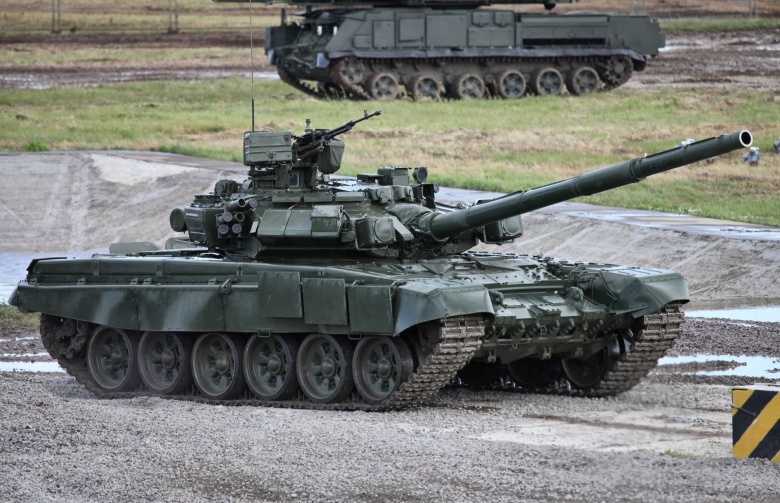
T-90A
The export variant is quite similar to the standard Russian T-90A, but there are some differences:
- The T-90SA is not equipped with a Shtora soft-kill APS by default, instead additional ERA elements occupy its space on the hull. The system, however, can be added if the customer wishes (Algerian T-90SAs do have the Shtora system)
- The T-90SA thermal imager (ESSA system is the standard version) can be replaced with another one if the customer wishes
- Internal electronics and crew systems can be configured based on customer requirements, for example by replacing the standard R-163 radio system with something else, or by removing the internal SKS-3 air conditioning system
Generally speaking, the T-90SA (along with its older T-90 sibling) is a successful export vehicle. Following a massive T-90S (export variant of the original T-90) license production deal with India, another contract for 347 T-90SA tanks (1.237 billion USD) was signed in 2007. The first 10 T-90SA Indian-produced vehicles were completed in 2009 and the amount of planned T-90SA tanks was gradually increased to 1000, possibly because of the massive setbacks faced by the indigenous Arjun tank program, before being replaced by a yet more advanced T-90MS model.
Another T-90SA operator is Algeria, although the exact number of T-90SA in Algerian service is not known, and the T-90SA is also used by Azerbaijan.
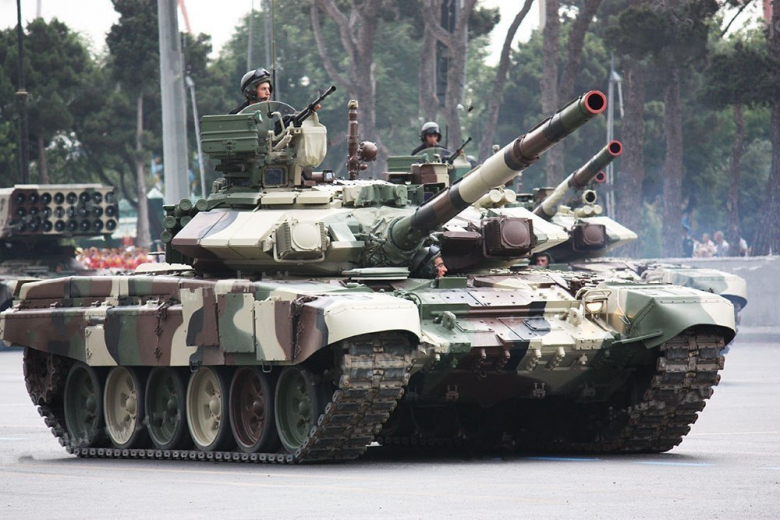
T-90SA
The T-90A itself currently remains in Russian service only. Some sources claim the T-90A took part in the 2016 fighting in Syria as part of the Russian contingent or that it was simply transferred to Syrian forces.
There is a video of a fighting Syrian T-90 being hit by a TOW-2A missile operated by terrorists. Thanks to its ERA, it survived relatively unscathed with only minor injury suffered by one of the crewmembers. It's not clear what type of T-90 it is, but the most likely conclusion is that it is a mid-production T-90. One T-90A transferred to the Syrians, however, was lost and subsequently captured by the Harakat Nour al-Din al-Zenki terrorist group during the fighting in Aleppo in June 2016. Regardless of the circumstances, the T-90 has proven itself to be a tough nut to crack.
In Armored Warfare, the T-90A will be a new Tier 8 Main Battle Tank, following the down-tiering of the original T-90 Vladimir to Tier 7. For more information about Balance 2.0 changes, please visit our Balance 2.0 website.





